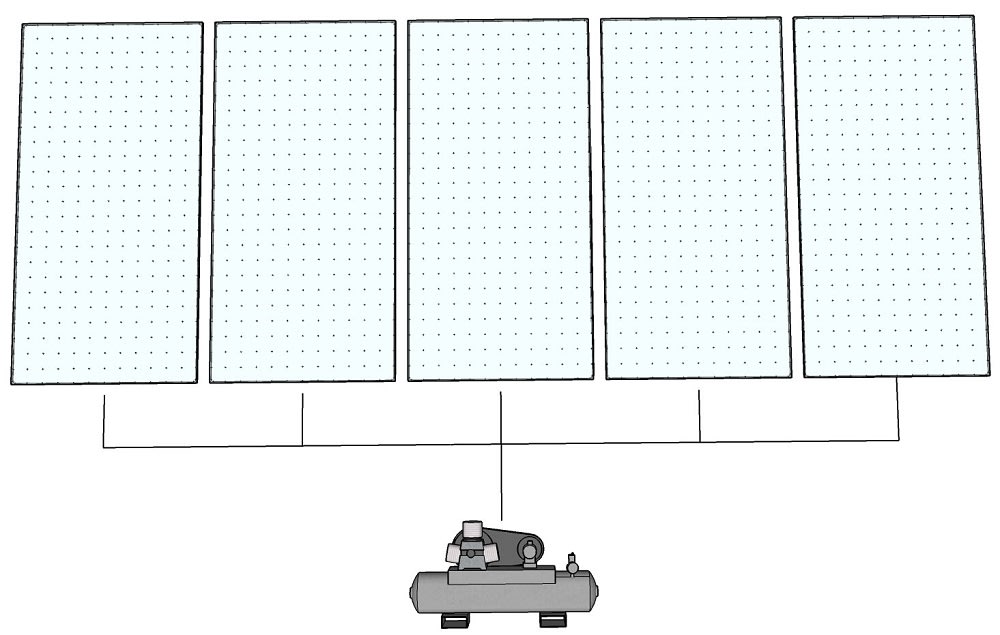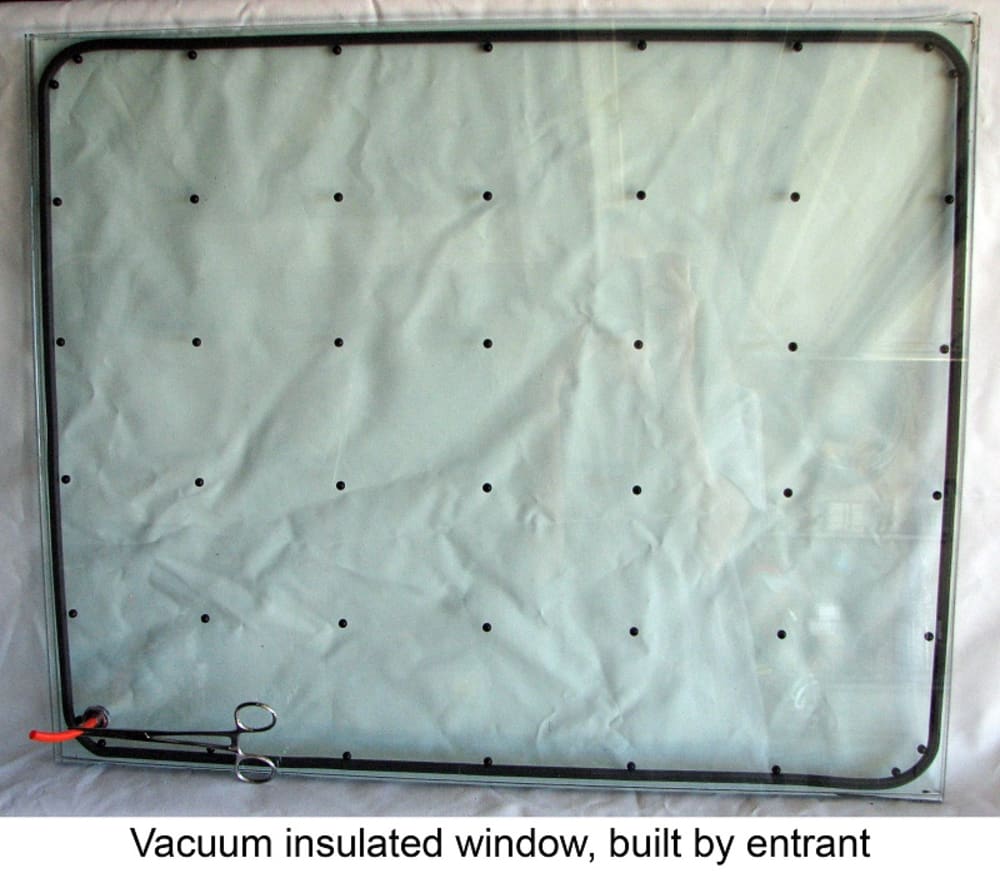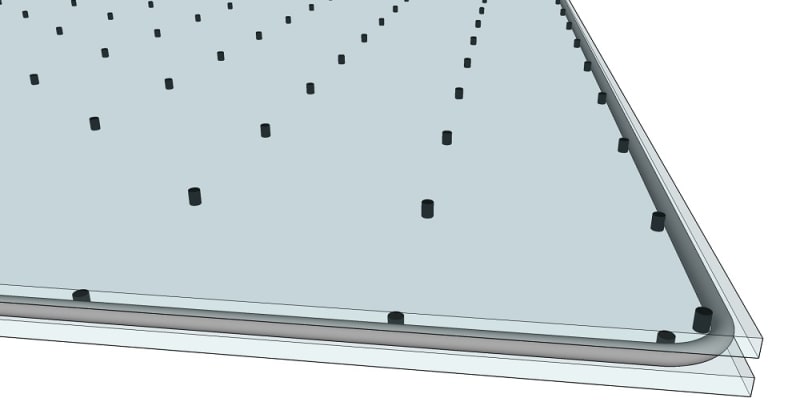The use of vacuum as a barrier to heat flow, in just about any thing but thermos bottles, is curiously nonexistent.
Buildings, windows, water heaters, refrigerators, ice chests, etc. are viable candidates.
Some of these lend themselves to both passive and dynamically held vacuum insulation.
Passive vs Dynamic
Passive is a void that can maintain a vacuum indefinitely, like a thermos bottle that is made of a continuous glass or steel envelope. This of course is ideal.
Dynamic is a void,with a less perfect seal, it will eventually decay and require evacuation again.
This dynamic route appears to me to be completely over looked, and either route, at the very least, under exploited.
Vacuum Insulated Windows
It may be that a continuous glass envelope will work for a passive vacuum window. I suspect, however, that such a thing will self destruct from internal stresses caused by the difference in thermal expansion of the inner and outer surfaces in times of great temperature inequality between the two environments.
Even if this is true, we can exploit the dynamic route quite effectively. A flexible seal between the two panes of glass will eliminate these stresses as well as conduct less heat than a solid glass edge. Such a scenario will fall into the dynamic category; imagine a building's windows all plumbed to a central vacuum pump.
The pump cycles automatically, once a week? once a month? A negligible amount of electricity is exchanged for an enormous gain in efficiency.
The panes will be held apart, resisting atmospheric pressure, by compression members, the composition of which selected for the qualities of compressive strength and low thermal conductivity.
Also the shape of these compression members can help limit heat transfer. Perhaps a sphere and plate, limiting the contact area to the point where the plate contacts the tangent of the sphere.
Also, in addition to being a vacuum insulated window, it is a stressed skin panel. An increase in the distance between the panes will result in an exponential increase in the strength of the panel. This happy coincidence may make possible larger windows than previously allowable with normal dual pane windows.
Office buildings are a good place to start for vacuum insulated windows.
Glass in office buildings is much thicker than that in residential, better to resist atmospheric pressure, greater spacing between the compression members. Also, office buildings are often skinned entirely in glass, so they would benefit more significantly from an increase in the insulation value of its windows. I have a scheme for vacuum insulating the non glazed areas of a building as well, but I will stick to the windows for now.
In this time of heightened environmental awareness, owning the first vacuum insulated office building could be a potential pr coup for a high profile company, Google?, Apple?
Such an action might also serve as a catalyst for industry change toward such superior products.
Windows are already double paned, so we are not adding substantially to the manufacturing cost.
Like this entry?
-
About the Entrant
- Name:Lance Stephenson
- Type of entry:individual
- Software used for this entry:Google SketchUp
- Patent status:none








